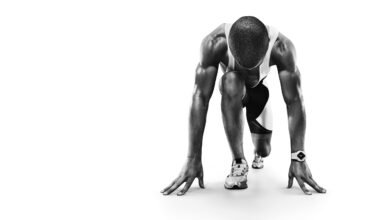Should You Use an Exercise Ball as a Chair?

Multiple studies confirm the negative effects of too much sitting, from slowing down your metabolism to increasing your risk of diabetes. Besides counteracting that by getting up frequently and moving around, some people swap an exercise ball—also called a yoga ball, balance ball, or stability ball—in place of their regular desk chair to achieve “active sitting.”
Rather than the slumping and poor posture that can happen even with ergonomic desk chairs, the theory is that sitting on an exercise ball (which is inherently unstable). forces your body to constantly make small adjustments in your core and lower body. The hope is that this results in abdominal strength and better posture.
Researchers agree that sitting for long periods of time isn’t healthy. But as far as the effectiveness of an exercise ball as a desk chair, the results are more mixed.
Benefits of Exercise Ball Chairs
There are many perceived benefits of using an exercise ball, such as improved posture, more energy, and better overall balance. Since the ball prompts frequent position shifts, it may also increase energy expenditure, which means more calories burned.
Researchers in a 2017 study monitored how bodies physically reacted over a 10-minute sitting period and concluded that sitting on a stability ball activated lower body muscles. Another study found that it might even boost core endurance.
Many proponents further believe that sitting on a ball encourages exercise. Once you have the ball handy, it’s easy to roll back from the desk and do a few core-strengthening moves.
Drawbacks of Exercise Ball Chairs
Some studies have found little to no connection between using an exercise ball in the workplace and the purported benefits. In fact, some of the research shows the potential for injury.
- No core activation: Researchers are split on the theory that sitting on an exercise ball increases core strength. While one analysis found that this form of active sitting engages the core muscles, others found no difference in how the core is used between an exercise ball and a regular desk chair.
- Insignificant calorie burn: If there’s any increased energy expenditure when sitting on an exercise ball, it’s likely fractional and not enough to reduce the health risks of sitting too long, according to a 2015 study.
- Increased pain: Sitting for prolonged periods can lead to back pain, but using a stability ball may have a similar effect. One study found almost half of those who used the ball reported some pain when using it.
- Greater injury risk: Because an exercise ball chair is unstable, there is a potential for injury if you lose your balance and fall off the ball. You may also be injured if it breaks while you are sitting on it.
If you experience any pain when using an exercise ball as a chair, discuss it with your medical provider and consider discontinuing use.
Precautions
If you decide to use an exercise ball at your desk, keep these factors in mind to get the most out of your new chair and ensure safety.
Consider the Size
Your ball’s height, angle, and inflation level all make a difference. Your thighs should slope downwards slightly rather than be at 90 degrees. But the ball shouldn’t be so tall that you end up balancing your wrists on the keyboard.
Create a Safe Space
Particularly during initial use—and if you have the freedom to customize your work station—it may be helpful to place your ball in front of a wall to catch you if you roll. An exercise mat underneath your ball can provide cushion and support for the same reason.
Another option is to use a base or frame to hold your ball chair in place. Some even provide lumbar support, which may be beneficial for your lower back by promoting a healthier posture (as long as it doesn’t change your posture too much, thereby increasing low-back strain).
Add Time Gradually
When starting out using a ball as a chair, begin with a half-hour or less. Build up your time each day to see how you tolerate it.
Alternatives to Office Ball Chairs
You may want to alternate between an ergonomic desk chair, a ball chair, and other forms of active workstations. In addition to ball chairs with frames, wheels, and lumbar support, there are other alternatives, such as:
Research shows that many of these options can increase energy expenditure without impairing your ability to perform your tasks. And they can be just as comfortable (if not more so) than sitting in a chair.
Still, regular standing, walking, and stretch breaks are probably better alternatives. Prolonged, continuous sitting is more problematic than total sitting time.
Frequently Asked Questions
How do you clean an exercise ball chair?
Soap and water can help keep your exercise ball chair clean and free from bacteria. Stay away from harsh chemicals, as these can harm the ball’s surface. The manufacturer’s instructions can provide more guidance for the best cleaning methods.
Is an exercise ball chair good for pregnancy?
If you are pregnant and want to work while sitting on an exercise ball, check with your doctor or obstetrician to make sure this is safe for you. Research has connected the use of an exercise ball during pregnancy with reduced low back pain and improvements in daily life. But these studies involve using the ball chair for exercise and for only limited amounts of time.
How long should you sit on an office ball chair?
Aim to get up every hour or so as sitting for long periods, whether on an exercise ball or traditional chair, isn’t good for your health. Set your smartphone alarm or download a chime app to remind you to get up and move around.
A Word From Verywell
Despite its popularity, research studies haven’t solidified the benefits of using an exercise ball as a chair. If you’re considering alternatives, you might want to investigate other options like sit-stand desks and balance chairs.
If you have back pain or other musculoskeletal disorders, consult with a physician or physical therapist to help determine the safest, most comfortable work station seating for you.




